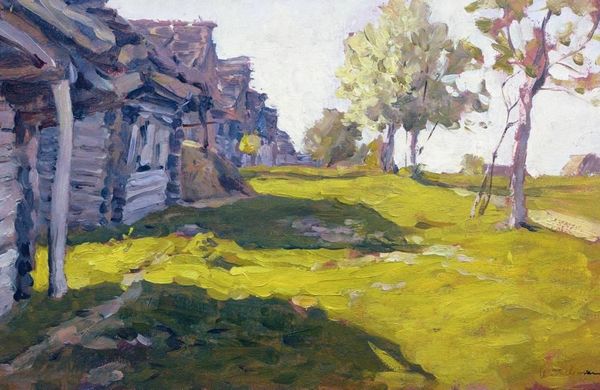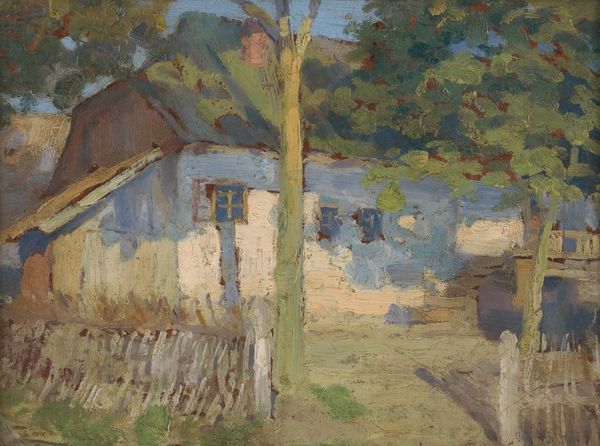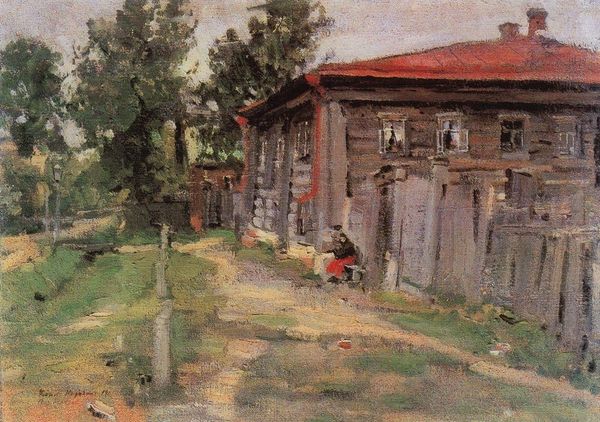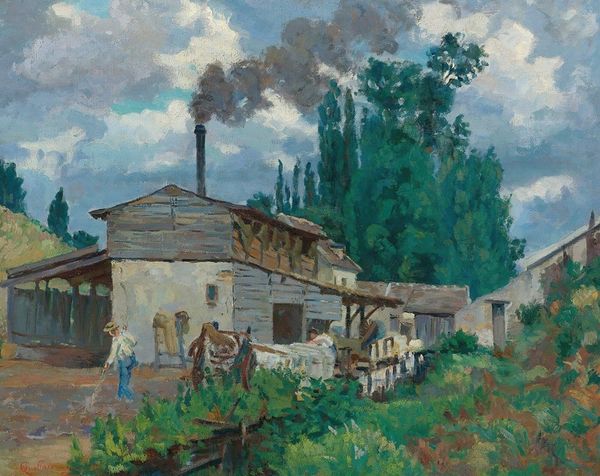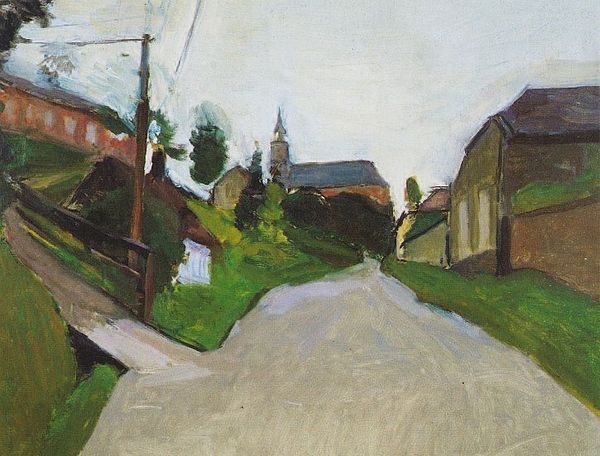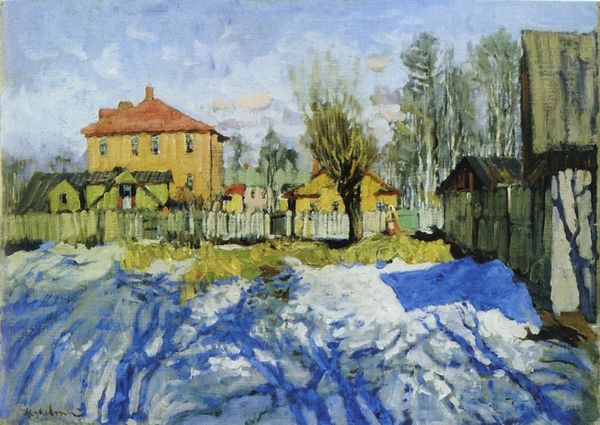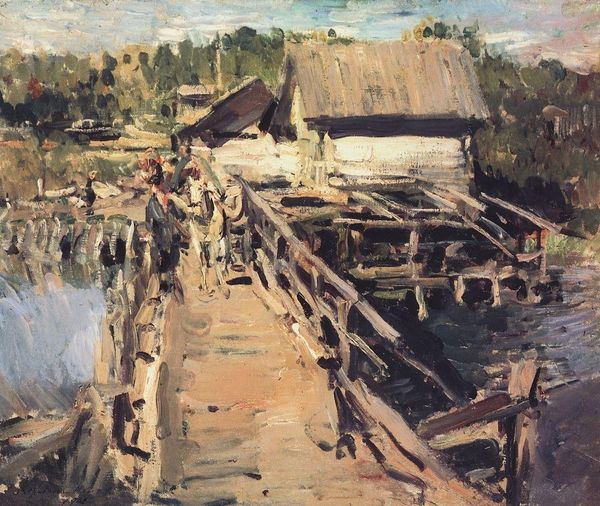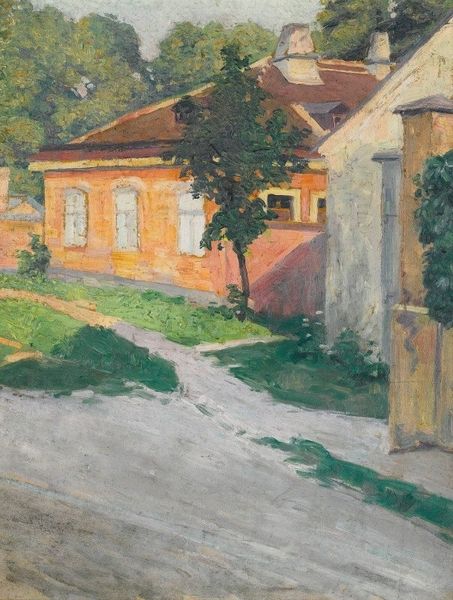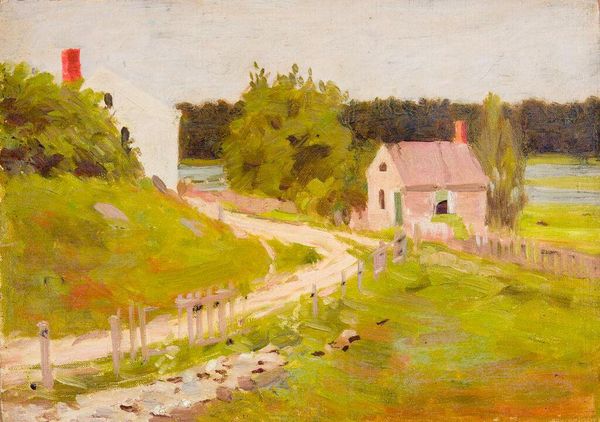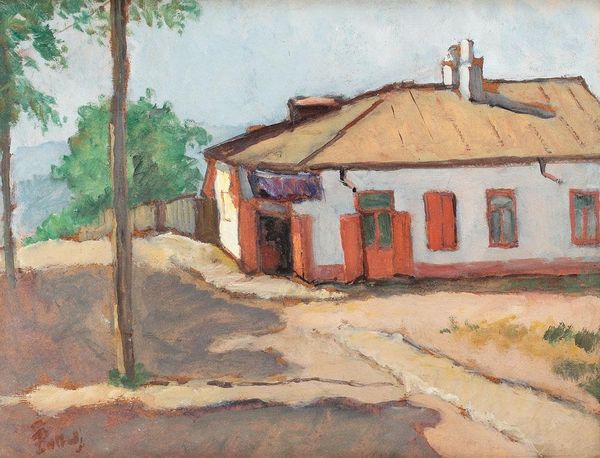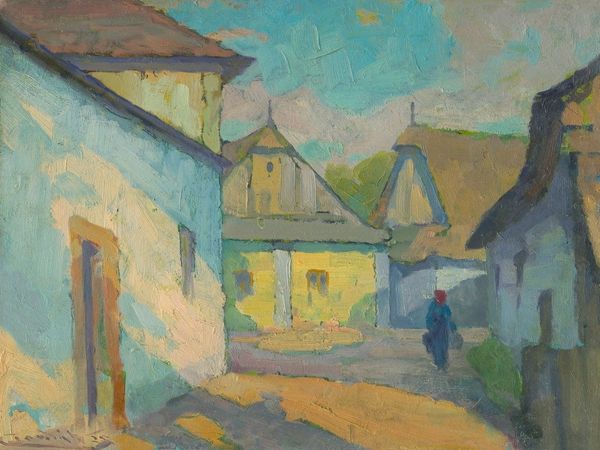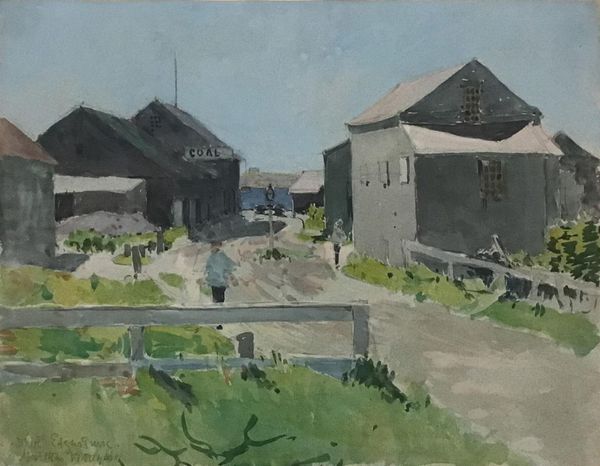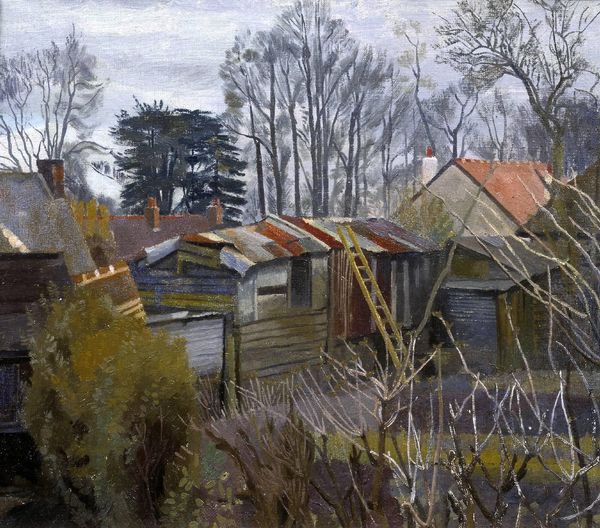
Copyright: Public domain
Editor: This is "Landscape with Fence," an oil painting created by Konstantin Korovin in 1919. It strikes me as a rather ordinary scene, a glimpse into rural life. What aspects stand out to you? Curator: The rough texture, achieved with oil paint, and the depiction of the fence intrigue me most. The fence acts as a foreground barrier. Consider its materiality, the rough-hewn wood; then think about the labor required to build it, to maintain this barrier between properties, between the domestic and the wild. What does this physical divide suggest about the societal organization during that period? Editor: That’s a great point! I hadn't considered the fence as anything more than a compositional element. It definitely adds a sense of… containment, maybe? I wonder if it reflects the restrictions people faced after the war. Curator: Precisely. Now, observe how Korovin applied the paint. Note the visible brushstrokes, the almost hurried application of color. He isn't attempting to precisely replicate the scene, but to capture the sensation, the immediacy of the moment. How might the availability, cost, or even rationing of materials during the post-war period have influenced this technique? Editor: So the very act of painting, the choices in material and application, become statements about the economic and social conditions of the time. The "careless" brushstrokes might point to scarcity and quick, efficient use of resources, maybe? Curator: Exactly. The landscape, therefore, is not just a pretty scene; it's a record of production and consumption under specific historical conditions. A post-impressionist painting rendered with possibly rationed materials is saying something about the hardship experienced by Russian peasants at the time, especially in light of Korovin's wealthy background. Editor: I now see the landscape in an entirely new light, understanding art in relation to material culture. Thanks! Curator: Likewise! Analyzing through the lens of materiality opens fascinating perspectives.
Comments
No comments
Be the first to comment and join the conversation on the ultimate creative platform.
